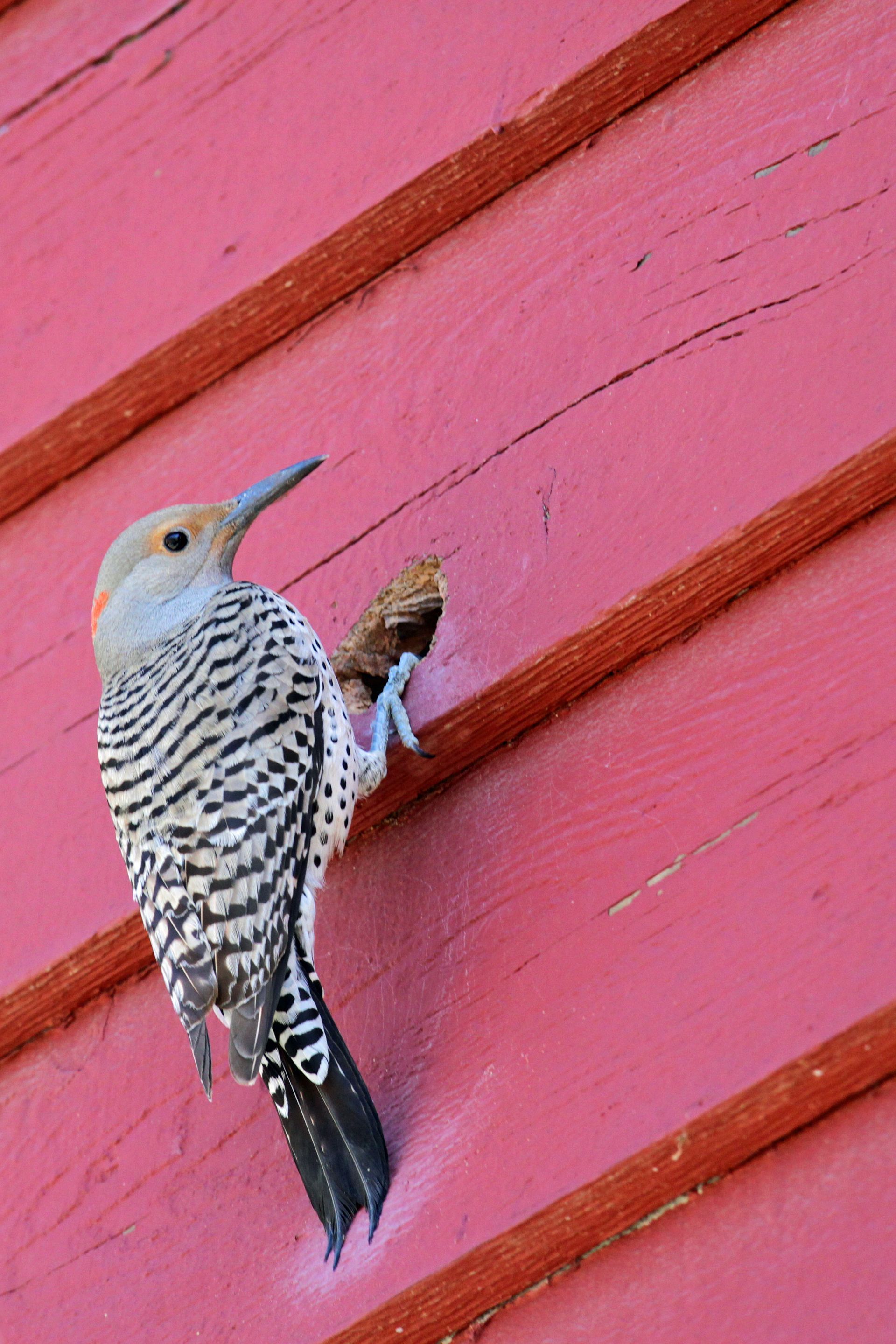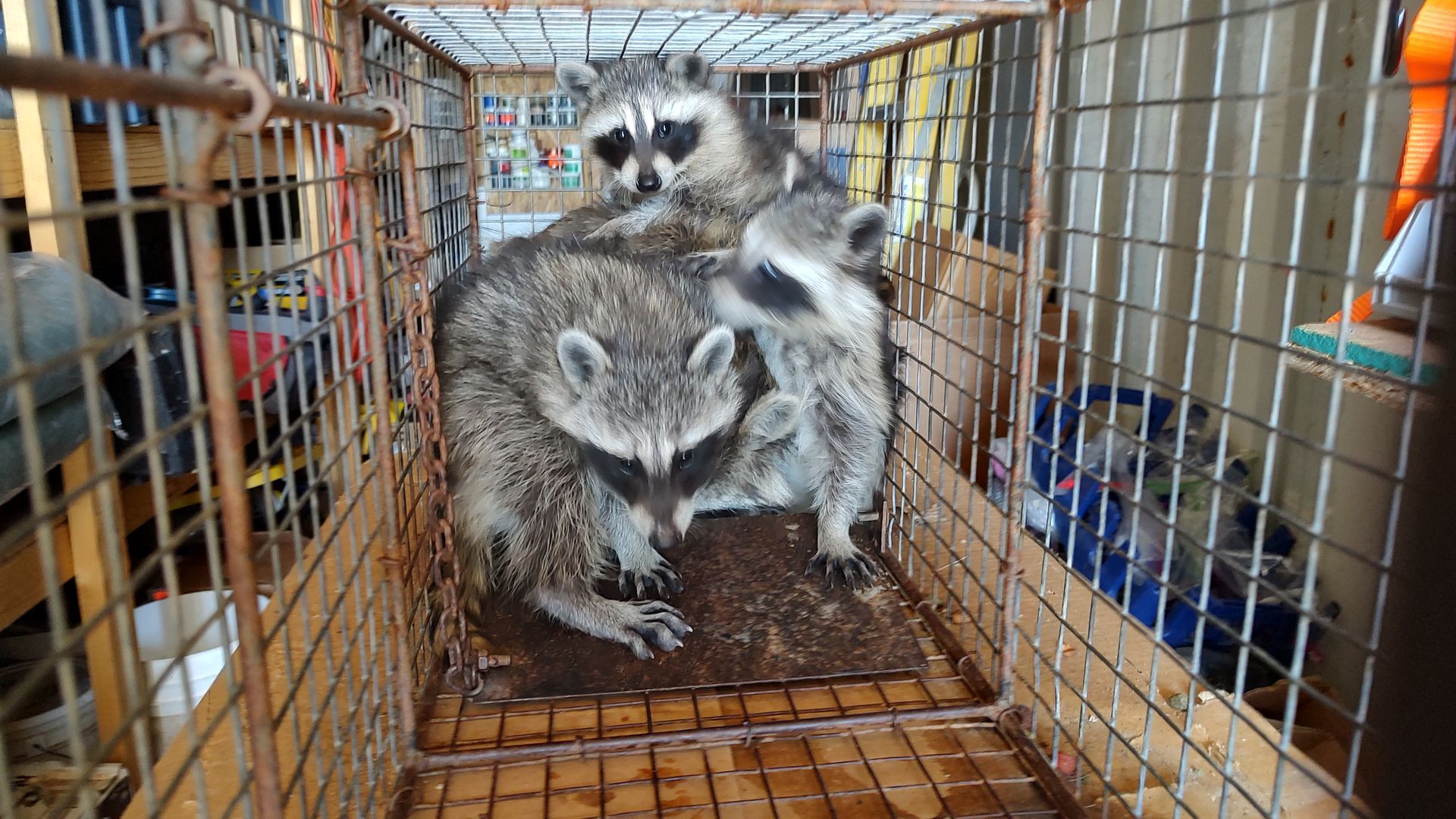Basic Wildlife Home Repair Services
Wildlife Damage Repairs
In some cases, property owners have had a history of wildlife damage, but measures were never taken to repair the damage or prevent a recurrence. Left unattended, these scenarios often invite further damage. An example of this is when property owners opt to do exclusion repairs themselves after we have removed the animals but don’t get the repairs done. Sure enough, sooner or later, they’re calling us for the same problem again.
Common examples include failure to install a chimney cap or to screen off animal access under concrete porches or storage sheds. Another scenario is a history of seasonal damage, but no measures were ever taken to prevent damage or do repairs.
A classic example is repeated woodpecker damage to siding, including wood, fiberboard, or even stucco. Unrepaired holes are a “welcome mat” for woodpeckers to do further damage. Or other species may utilize this ready-made housing: starlings, nuthatches, or tree squirrels. Whatever your unfinished repairs,
we have the experience and expertise to get it done.
Woodpecker Control & Repairs
Next to pigeons, “woodpeckers” are our most common bird complaint. A variety of bird species commonly peck on structures, invariably trying to make a nest cavity in a wall just like they would in a tree. Only rarely are they feeding on wood-boring insects.
Local true woodpeckers include the northern red-shafted flicker, hairy woodpecker, and downy woodpecker. Several smaller birds, though not woodpeckers, can be a real nuisance, enlarging knotholes in wood siding and making holes in styrofoam-backed stucco. These include several species of nuthatches and chickadees. Nuthatches are the small, slate- or blue-gray acrobats famous for their ability to hop headfirst down tree trunks. Chickadees are the friendly, tiny birds with a black cap and throat patch and familiar “chick-a-dee-dee” call. All of these can be found in the region year-round.
The northern flicker is by far the most destructive and annoying species. Flickers are rather large (bigger than a robin), gray and brown birds covered with black speckles. They also have a distinctive black bib, white rump patch, and reddish-orange wing and tail feathers. Males have a bright red mustache. Flickers regularly feed on the ground for ants and other insects. They have several very distinctive vocalizations.
Starting around March 1, flickers begin setting up territories and finding a mate. When their breeding hormones kick in, flickers are compelled to do three things: 1) Make a piercing, shrill territorial call; 2) drum with their beak as loudly as possible on wood or metal; and 3) peck holes in hollow-sounding surfaces (trees, wood siding, and stucco). Until they begin nesting in May, they can be very annoying and destructive. They drum machine-like on gutters and chimney caps and make multiple holes in human structures. Hundreds of dollars of damage can be done very quickly.
Our initial approach to controlling hole damage is a 3-step procedure: 1) properly repairing the hole to match the structure, 2) applying one or more chemical repellents over/around the repair, and 3) attaching any of several visual deterrents close by. This initial procedure is sufficient to stop damage 60-70% of the time. In some cases, depending on the condition of the structure and the history of bird activity, the procedure may need to be repeated 2 or 3 times. In cases where damage persists, we recommend acquiring a federal US Fish & Wildlife Service depredation permit, allowing us to legally take (kill) the problem bird(s). Drumming on chimney caps and gutters can usually be stopped with the simple use of chemical and visual deterrents. Damage by the other species is usually on a much smaller scale and is addressed accordingly using the same methods. However, nuthatches and chickadees have almost no fear of visual deterrents.
If you need help with woodpeckers and similar birds, call us at 719-636-1014 for an investigation and prices. We’d be happy to help.
Quick Links
Contact Information
Phone: 719-636-1014
Email: alpinewildlifecontrolllc@gmail.com
Address: Colorado Springs, CO 80918
Business Hours: Mon - Fri: 8:00 am – 5:00 pm
Emergency Services 24/7
Licensed and Insured






Quick Links
Contact Information
Phone: 719-636-1014
Email: alpinewildlifecontrolllc@gmail.com
Address: Colorado Springs, CO 80918
Business Hours: Mon - Fri: 8:00 am – 5:00 pm
Emergency Services 24/7
Licensed and Insured








